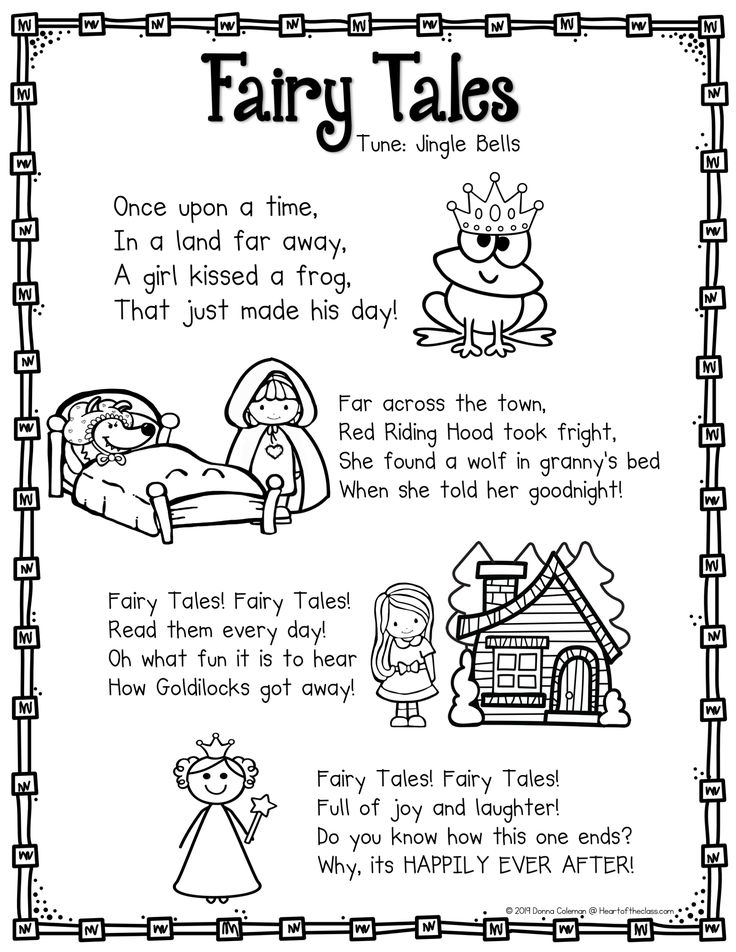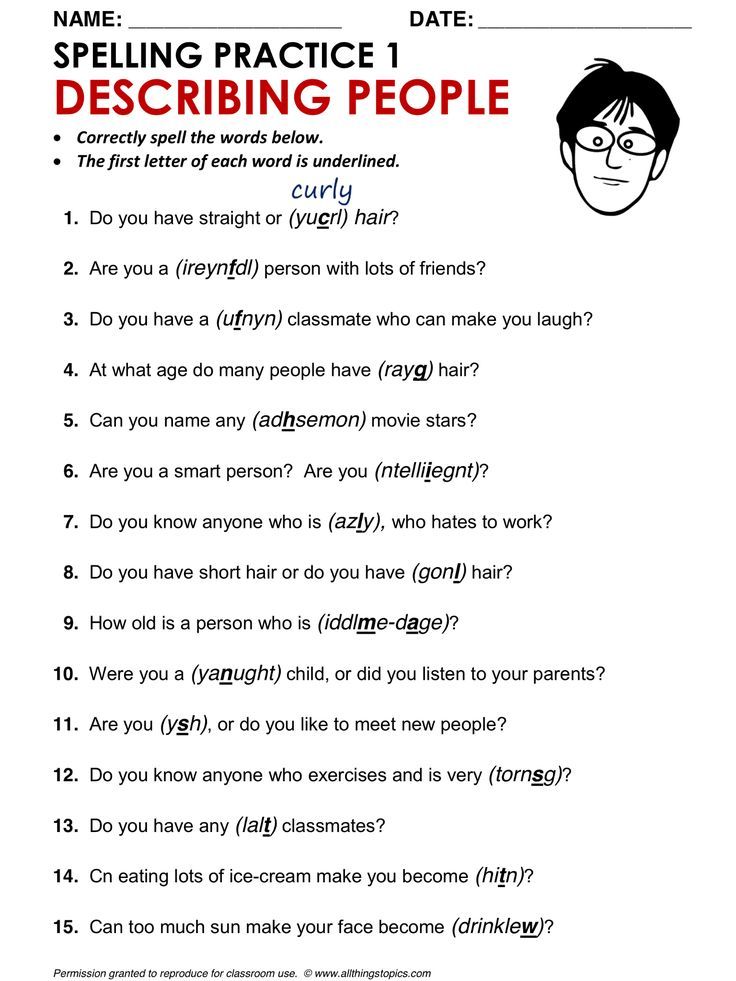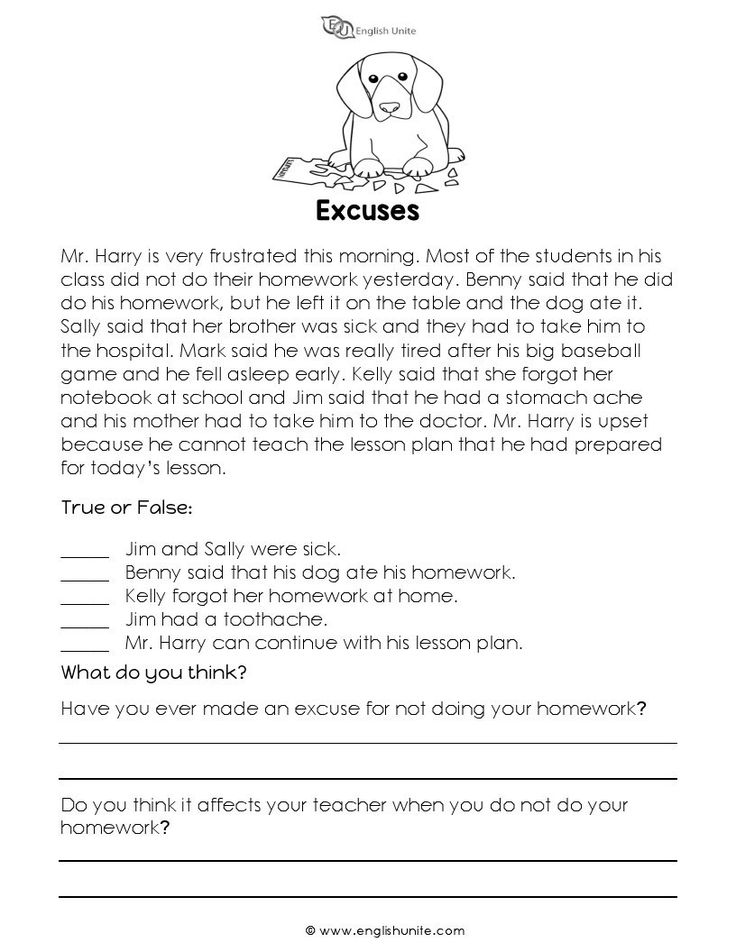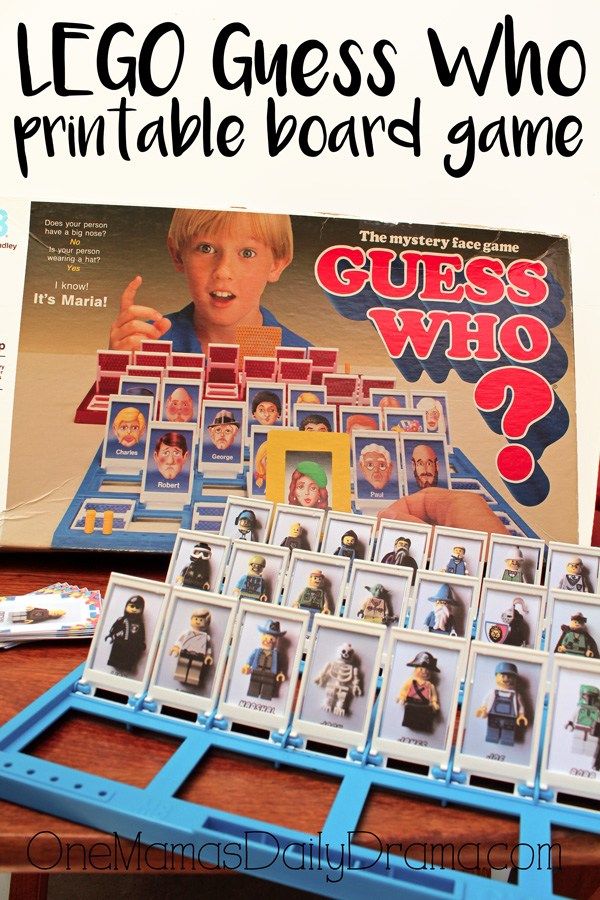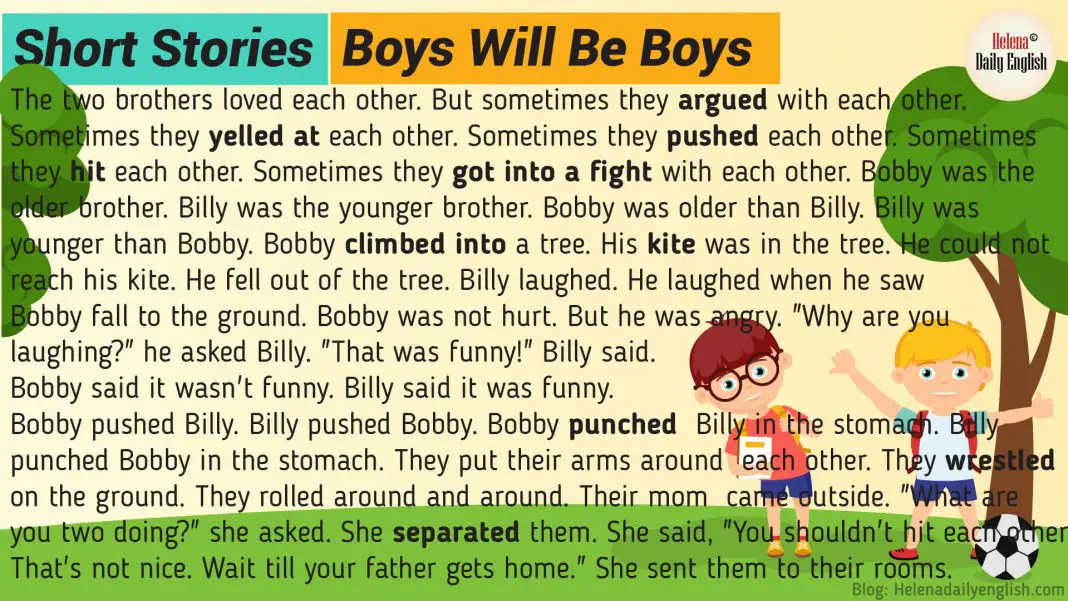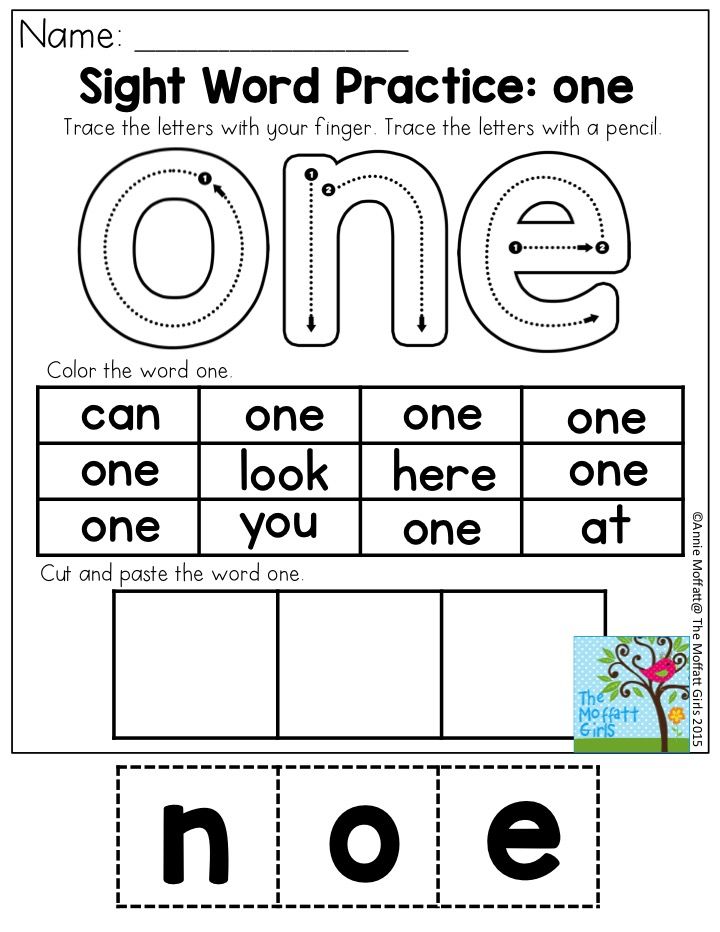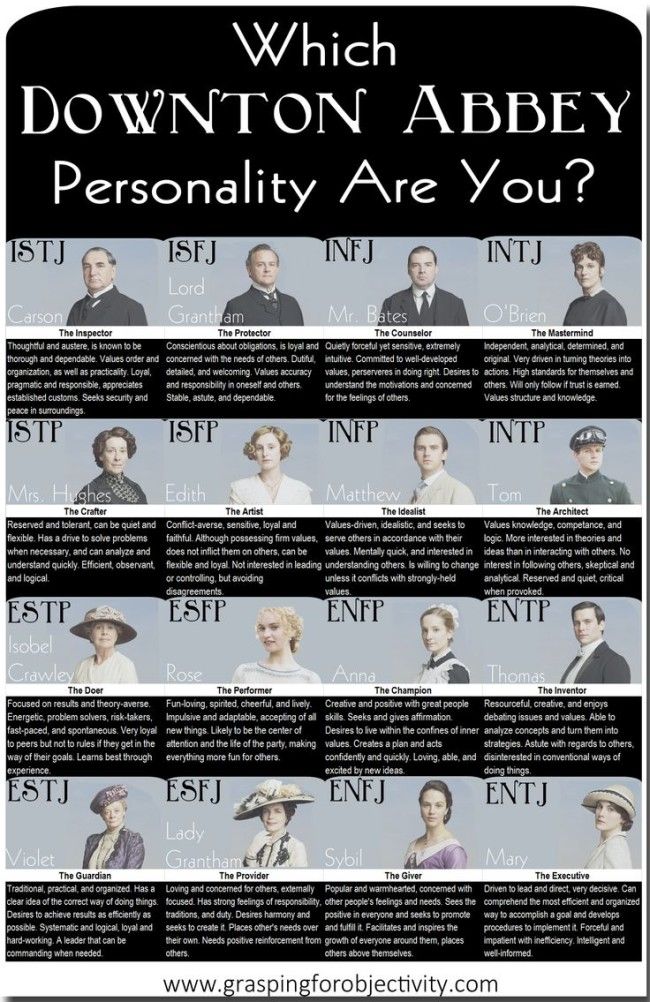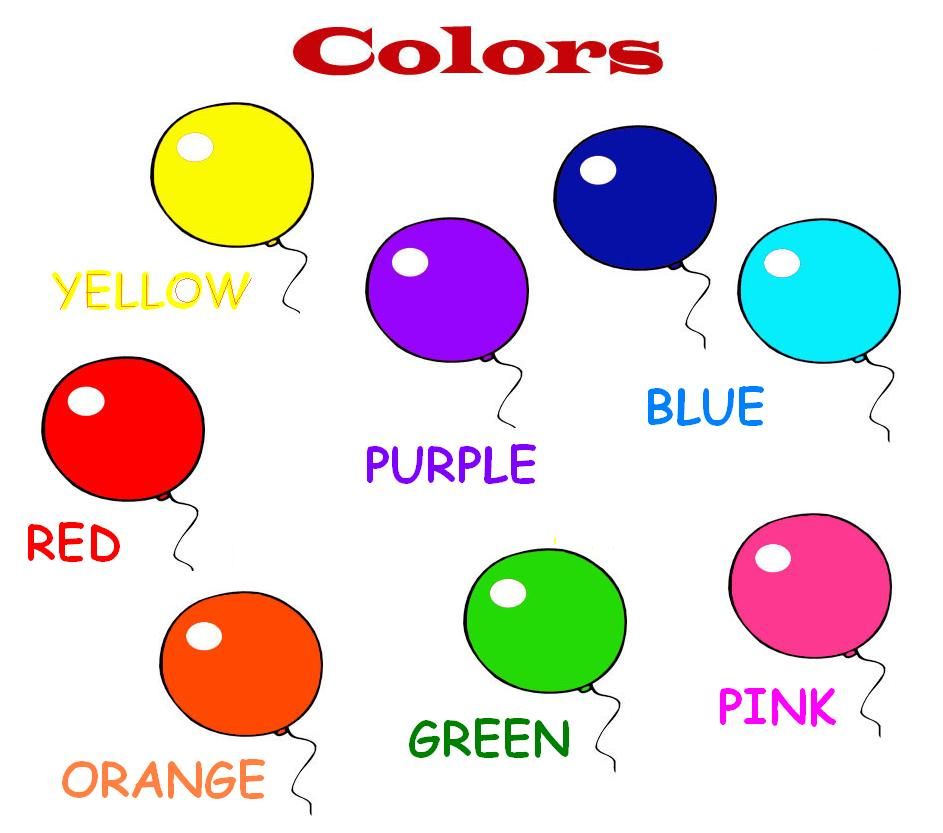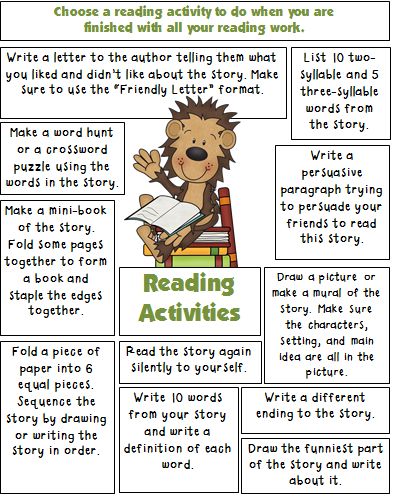Preschool feelings activity
8 Fun Feelings Activities for Preschoolers
- Share
Early childhood is as much about developing a child emotionally as it is about building physical and intellectual capabilities.
These feelings activities for preschoolers bring art, songs, discussion and stories together, to help kids experience their emotions in practical ways.
How do you teach preschoolers about feelings?
As children progress through the stages of emotional development, they naturally learn to identify their feelings and express them in healthy ways.
Much of a child’s emotional development happens during play.
While children are playing dress-up or engaging in pretend play, they are imitating and acting out real-life scenarios, which are full of emotions.
Pretend play gives children a way to safely act out and practise big emotions such as fear, love, sorrow and anger.
However, parents and teachers can also find opportunities for teaching emotions to preschoolers by planning special feelings/emotions activities.
Here are a few ideas.
1. Mirror Emotions
Give children a hand-held mirror or stand in front of a large mirror. Ask them to explore their emotions in their reflections.
Ask them to make different faces. Start with easier emotions to identify, such as sad, happy and angry. Ask how their faces change as their emotions change.
Then, try to play with emotions such as boredom, excitement and worry. What do those faces look like?
Tell children to think of a cute puppy, running away from a lion, a very sad baby, or a big gift they are about to unwrap. How and why do their faces change?
2. Dance Your Feelings
Challenge kids to make up dances to show what various emotions feel like:
- A tired dance – Use scarves, slow movements and sleepy faces to slow music.
- An angry dance – Stomp around the room, making jerking movements with stern expressions to choppy music.
- An excited dance – Jump around with lit-up faces and a happy tune.

Choose music to match the mood and try out different emotions.
As a variation, play different kinds of music and ask children to show you, through their dancing, how the music makes them feel.
3. Emotion Drawing
Ask kids to draw a picture that explains how they feel.
Do not direct this activity too much. Rather allow children to express themselves with their own creativity. Different children will find different ways of representing their emotions.
Another way to do this is to play music (use the music from the dancing activity above) and ask your children to draw how the music makes them feel.
Tip: use clues from movies to help you choose the sounds, such as a choppy violin that’s used when a shark is approaching, or a slow, classical song that creates a sad atmosphere.
4. How Would You Feel?
Have a discussion about feelings and ask kids how they would feel in various situations.
Here are some examples of questions about feelings:
- How would you feel if…?
- How did you feel when…?
- How does it make you feel when…?
- Tell me about a time when you felt really scared.
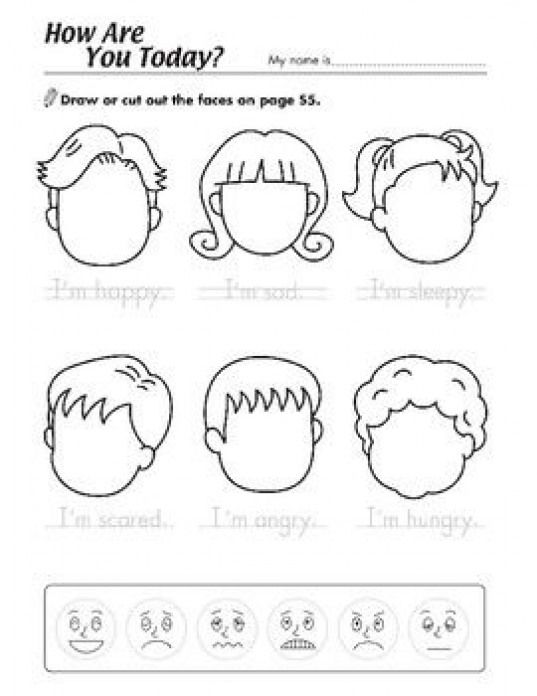
- What does mom do that makes you feel loved?
Learning to verbalize and express feelings is an important part of healthy development.
5. Paper Plate Faces
Creative art is a great way to make a physical representation of emotions.
One of the simplest emotions crafts for preschoolers is to make paper plate faces, depicting various emotions.
These can be turned into masks or you could attach a craft stick (or ice-cream stick) to the bottom and turn them into puppets for kids to use during their dramatic play.
6. Story Time
Story time is one of the easiest ways to incorporate teaching emotions. Books are filled with characters experiencing the full array of emotions and learning important life lessons.
As you read your stories in class or at bedtime, remember to ask questions about what the characters are feeling, why they are feeling that way, as well as how you would feel in the same situation.
7. Feeling Faces
Challenge kids to page through a magazine, or a storybook and identify faces that show strong emotions.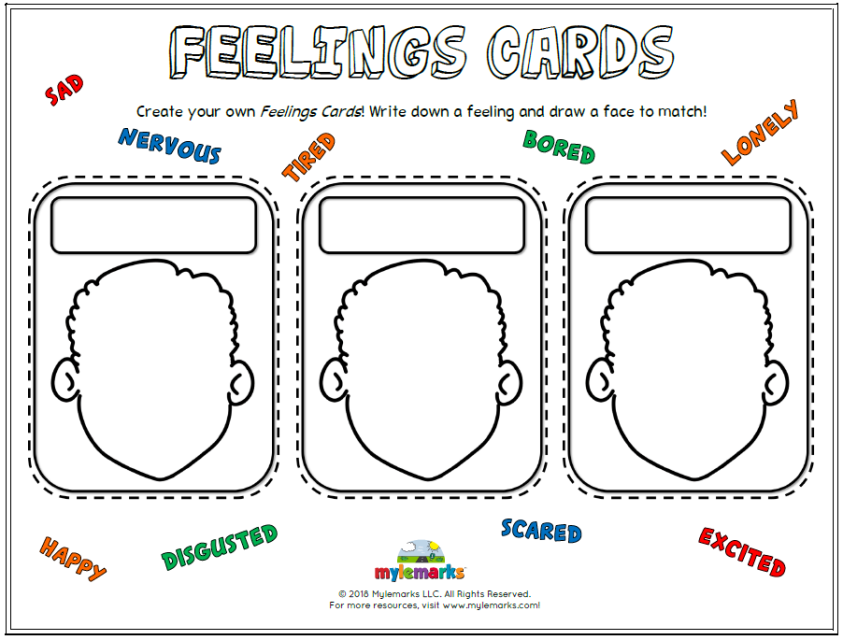 Animals’ emotions are also often clearly depicted in drawings.
Animals’ emotions are also often clearly depicted in drawings.
Cut out faces from a magazine and sort them into groups – happy faces, sad faces, angry faces, etc.
8. Emotion Songs
Music is an excellent medium for teaching skills in early childhood. These cute songs are all about emotions and kids will enjoy singing along to them.
If You’re Happy
This version of the popular song “If You’re Happy and You Know It” is by Super Simple Songs and it incorporates more emotions. Use these or make it up as you go along.
If you’re happy happy happy, clap your hands.
If you’re happy happy happy, clap your hands.
If you’re happy happy happy, clap your hands, clap your hands.
If you’re happy happy happy, clap your hands.
If you’re angry angry angry, stomp your feet.
If you’re angry angry angry, stomp your feet.
If you’re angry angry angry, stomp your feet, stomp your feet.
If you’re angry angry angry, stomp your feet.
If you’re scared scared scared, say, “Oh no!”
If you’re scared scared scared, say, “Oh no!”
If you’re scared scared scared, say, “Oh no!” say, “Oh no!”
If you’re scared scared scared, say, “Oh no!”
If you’re sleepy sleepy sleepy, take a nap.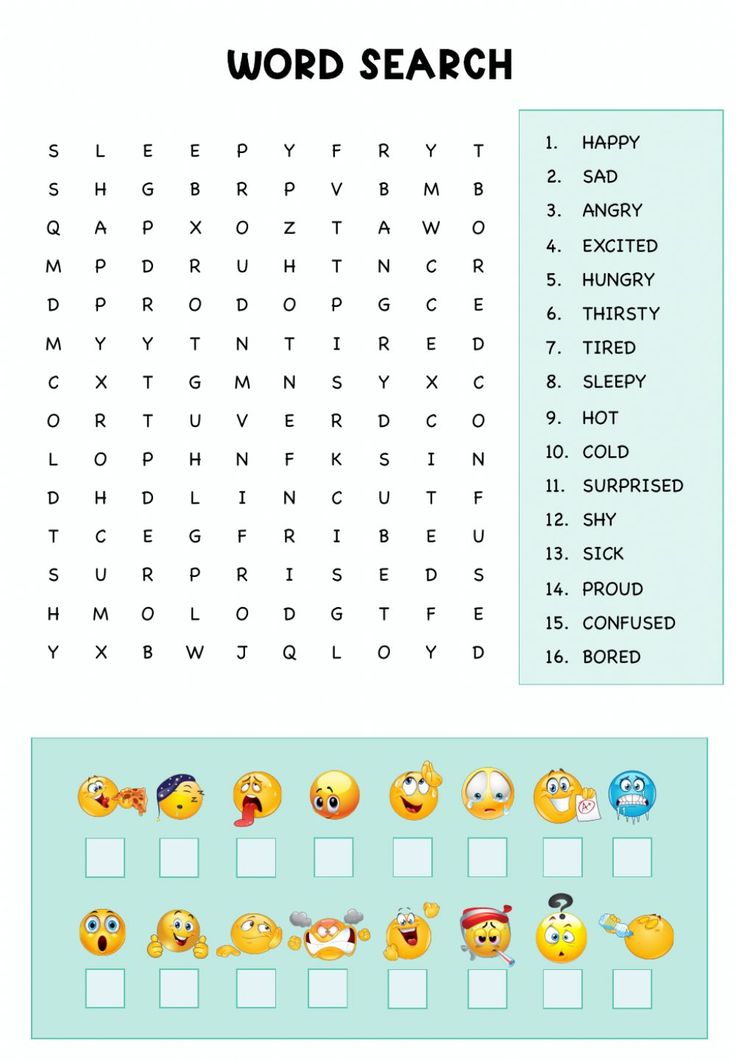
If you’re sleepy sleepy sleepy, take a nap.
If you’re sleepy sleepy sleepy, take a nap, take a nap.
If you’re sleepy sleepy sleepy, take a nap.
If you’re happy happy happy, clap your hands.
If you’re happy happy happy, clap your hands.
If you’re happy happy happy, clap your hands, clap your hands.
If you’re happy happy happy, clap your hands.
This is a Happy Face
This is a good song to introduce the topic of emotions and how our facial expression often reflects how we’re feeling.
You can listen to the tune here. Watch it and then play it in the background as you sing along and make the faces. It has great music to accompany all the emotions.
This is a happy face.
This is a happy face.
This is a happy face.
This is my happy face.
This is a sleepy face.
This is a sleepy face.
This is a sleepy face.
This is my sleepy face.
This is an angry face.
This is an angry face.
This is an angry face.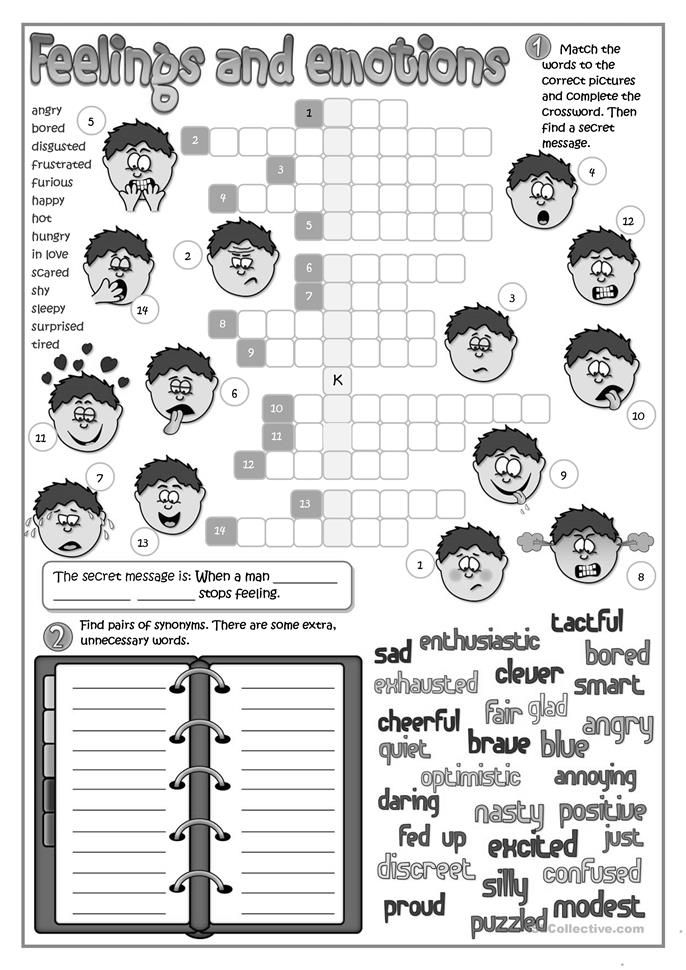
This is my angry face.
This is a surprised face.
This is a surprised face.
This is a surprised face.
This is my surprised face.
Happy. Sleepy. Angry. Surprised.
Happy. Sleepy. Angry. Surprised.
This is an excited face.
This is an excited face.
This is an excited face.
This is my excited face.
This is a sad face.
This is a sad face.
This is a sad face.
This is my sad face.
This is a nervous face.
This is a nervous face.
This is a nervous face.
This is my nervous face.
This is a silly face.
This is a silly face.
This is a silly face.
This is my silly face.
Excited. Sad. Nervous. Silly.
Excited. Sad. Nervous. Silly
“Now, let me see those faces!”
Show me your happy face.
Show me your sleepy face.
Show me your angry face.
Show me your surprised face.
Show me your excited face.
Show me your sad face.
Show me your nervous face.
Show me your silly face.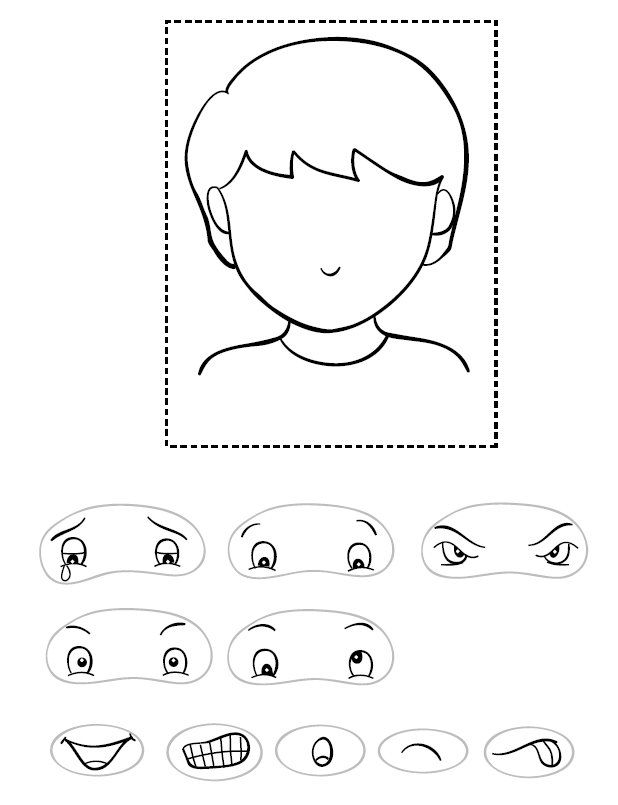
This is a happy face.
This is a happy face.
This is a happy face.
This is my happy face.
I hope you liked these simple emotions activities for preschoolers.
For more ideas, here are some social-emotional activities for preschoolers.
Get FREE access to Printable Puzzles, Stories, Activity Packs and more!
Join Empowered Parents + and you’ll receive a downloadable set of printable puzzles, games and short stories, as well as the Learning Through Play Activity Pack which includes an entire year of activities for 3 to 6-year-olds.
Access is free forever.
Signing up for a free Grow account is fast and easy and will allow you to bookmark articles to read later, on this website as well as many websites worldwide that use Grow.
- Share
Emotions and Feelings Preschool Activities, Games, and Lessons
My feelings and emotions preschool activities, games, lessons, and printables This month's theme explores two subjects close to children's health and well being: Feelings and Emotions.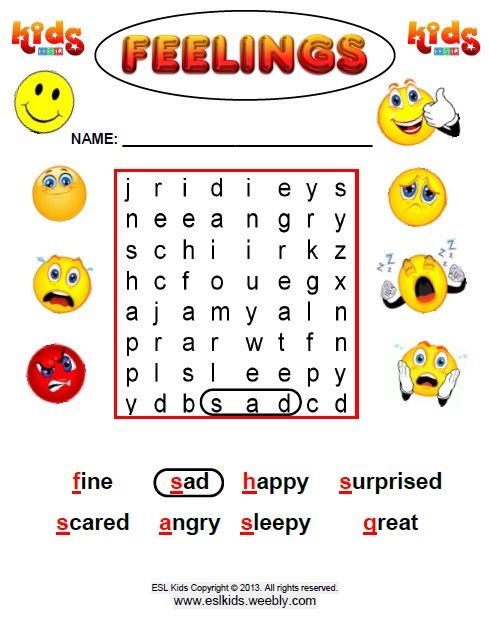 Children participate in literacy activities that help them build vocabulary and word recognition skills around topics that relate directly to their daily lives and experiences. Let your preschool and kindergarten children explore what it means to have feelings via movement, singing, drawing, writing, matching, talking, and listening.
Children participate in literacy activities that help them build vocabulary and word recognition skills around topics that relate directly to their daily lives and experiences. Let your preschool and kindergarten children explore what it means to have feelings via movement, singing, drawing, writing, matching, talking, and listening.
Themes and Projects
My Feelings
Monsters and Halloween Feelings
Crafts
Friendship Heart Painting
Funny Faces Pumpkins
Happy and Sad Face
Activities and Lessons
Emotions and Feelings Rhymes and Songs
Emotion Intro
Faces and Emotions Flip-Book
Games
Emotion Faces Matching
Making Faces Folder Game
Feelings Bingo
Movement
We're Going on a Monster Hunt
Emotions Movement Rhyme
If You're Happy and You Know It (Emotions)
Booklets and Other
Emotions Word Wall
Emotions Photo Cards
My Many Moods Emergent Reader Book
Worksheets
Emotions Write
Feelings Chart
Halloween Ghost Drawing
Free Emotions Activities, Games, and Printables
Introduce and let children explore the different feelings they can experience on any day.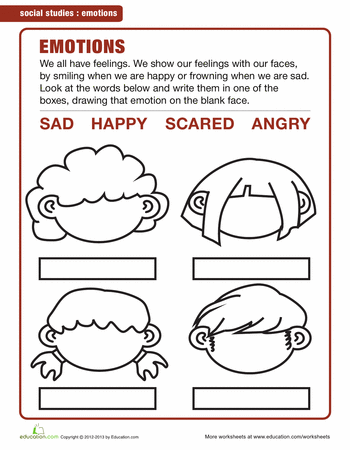 Our activities help children identify and name their emotions and feelings. Use the activities during your All About Me theme:
Our activities help children identify and name their emotions and feelings. Use the activities during your All About Me theme:
All About Me
My Feeling and Emotions
Place different size mirrors all around the room.
Fine Motor SkillsPrint out a monster face without facial features and let children use play dough to create different facial expressions and mood. Let children share with you how the monster feels.
My Feeling Preschool ActivitiesToday I feel
Read the book: Today I Feel Silly: And Other Moods That Make My Day
After reading the book prompt students to discuss a variety of feelings. Hand out a small paper plate to each child and encourage them to make a feeling puppet. Have them color or cut out and paste a feeling face on their paper plate.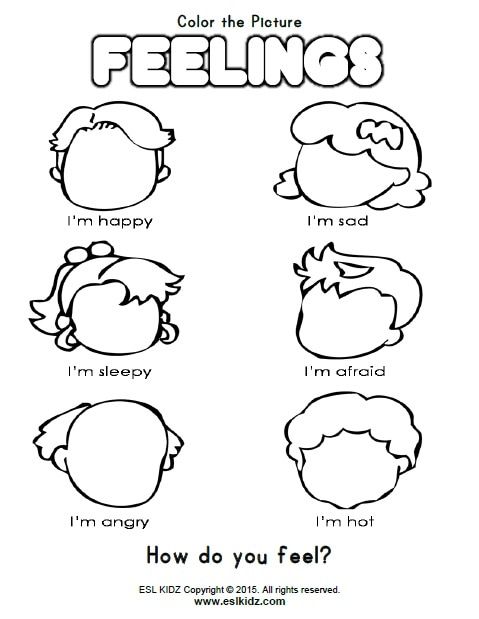 Decorate with yarn annd paper scraps for hair and ears. Attach a large craft stick to the back. Let children share their feeling puppet with the group. Re-read the book and let the children with the matching feeling hold up their puppet.
Decorate with yarn annd paper scraps for hair and ears. Attach a large craft stick to the back. Let children share their feeling puppet with the group. Re-read the book and let the children with the matching feeling hold up their puppet.
Happy and Sad
Hand out a mirror to each child. Talk about how we feel when we're happy and how it shows in our face. Sing the song "If You're Happy and You Know It." Let children look in the mirror and make a happy face.
If you're happy and you know it, show a smile.
If you're happy and you know it, show a smile.
If you're happy and you know it, and you really want to show it,
If you're happy and you know it, show a smile.
Repat by children looking in the mirror making a sad face.
If you're sad and you know it, cry BOO-HOO.
Feeling and Emotions Craft
Hand out a paper plate and a mouth piece to each child. Drill a hole to the bottom of the paper plate and attach the mouth piece with a brass fastener.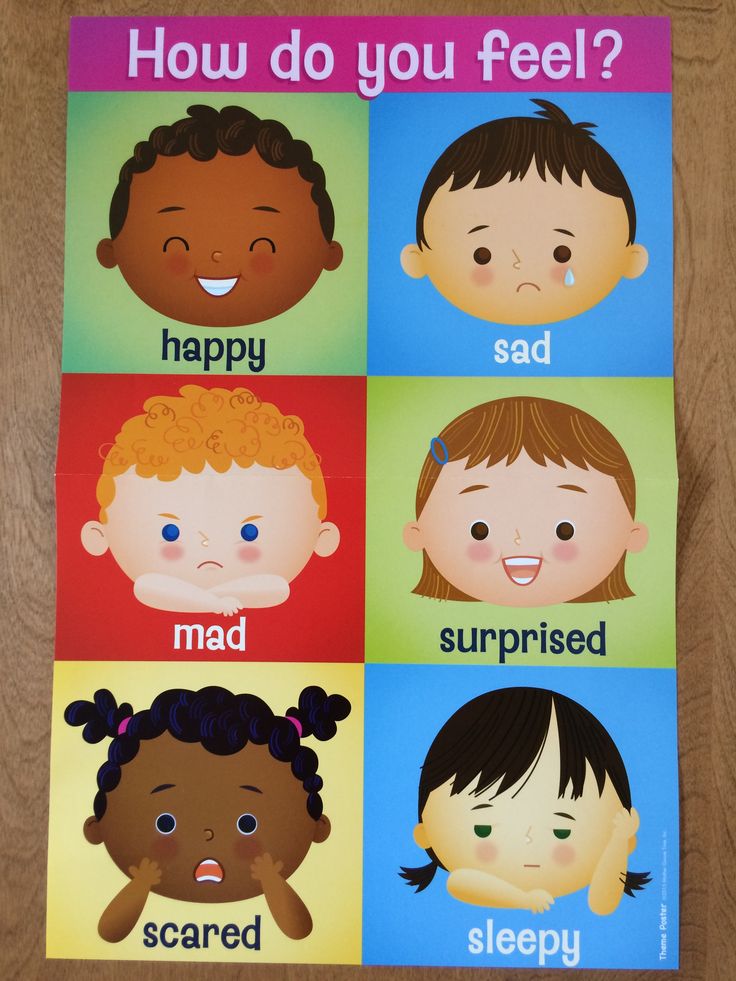 Let children decorate the face. Sing the song again and let children show the matching feeling on their puppet's face.
Let children decorate the face. Sing the song again and let children show the matching feeling on their puppet's face.
Preschool Activities:
Media Root
My Feelings and Emotions Lesson and Printables (available inside our KidsSoup Resource Library)Preschool Activities:
Media Root
Sorting Out Emotions Activity
What you need:
Several magazines or magazine pages
White construction paper
Scissors
Glue
What you do:
Label several sheets of blank white construction paper with emotions words: happy, sad, mad, surprised, shy, worried, silly, proud, etc. Give children magazines or magazine pictures to look through for images of people that match each of the words. Let children cut out the pictures and glue them to the appropriate pages. The pages can be made into a classroom book once they have been filled with images.
Preschool Activities:
Media Root
Feelings Matching Game
Print two copies of the emotion cards and cut out.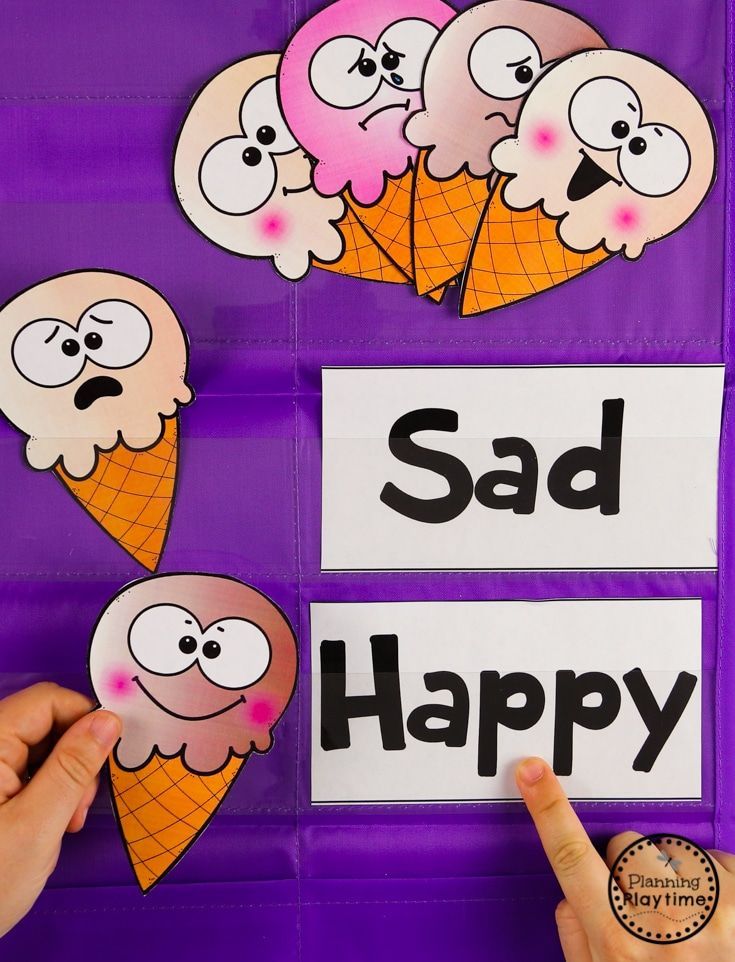 Let children match the pictures.
Let children match the pictures.
Matching Game: Place cards face down on the table. Let children turn over two cards at a time. If the cards match, they can keep them and get another turn. If the cards don't match, the next player gets a turn.
How Are You Feeling Today?
Place feelings picture cards in a row on a board. Let children pick out their name cards. Point at each emotion card on the board and name it or ask children to name the emotion. Discuss why they think the child in the picture feels that way. Ask children how they feel today. Let children place their name card below the emotion card that fits their feeling.
Sing the "I Have Feelings" song:
I Have Feelings
(Tune: Twinkle, Twinkle, Little Star)
I have feelings (point to self)
So do you (point to children)
Let's all sing about a few.
I am happy (make a big smile)
I am sad (frown)
I get scared (cross arms and make scared face)
I get mad (make fists and stomp feet)
I am proud of being me (hands on hips, shoulders straight, smile)
That's a feeling too, you see.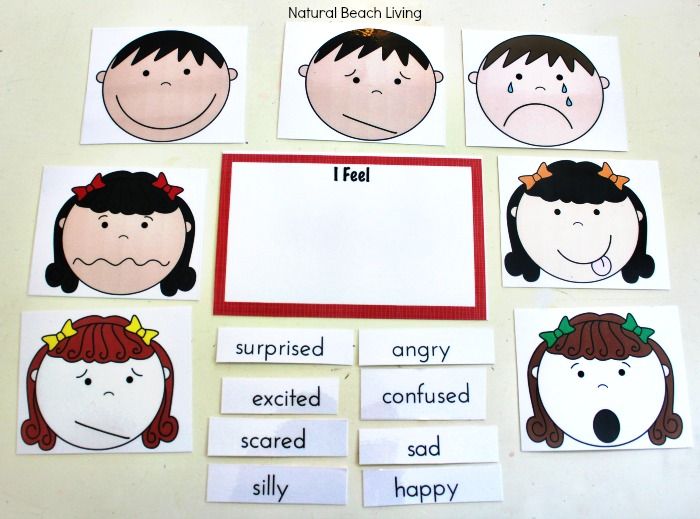
I have feelings (point to self)
You do, too (Point to children)
We just sang about a few.
Book:Guess How Much I Love You
Read the book and discuss with children how they feel when someone tells them "I love you." Sing the song:
I love You
(Tune: You Are My Sunshine)
I love you mommy
My dearest mommy
You make me happy
When I am sad
I want to tell you
I really love you!
When I'm with you, I am so glad!
Change to any other family member.
Go Away, Big Green Monster! Activities, Lessons and PrintablesBook: Go Away, Big Green Monster!
After reading the book, invite children to share with the group things that scare them (storms, snakes, etc.). Then say the following rhyme for each thing:
A Monster Goes Like This and That
By Jolanda Garcia
A monster goes like this and that (walk feet in front of you)
It's terrible (big) (use arms out at side)
BUT, I'm not scared of that! (shake head)
A storm goes like this and that (move from side to side)
It's terrible (loud) (stomp)
BUT, I'm not scared of that! (shake head)
Preschool Activities:
Media Root
If You're Happy and You Know It (Gross motor skills)
If You're Happy and You Know It
Adaptation from Original by Author Unknown
If you're happy and you know it, show a smile.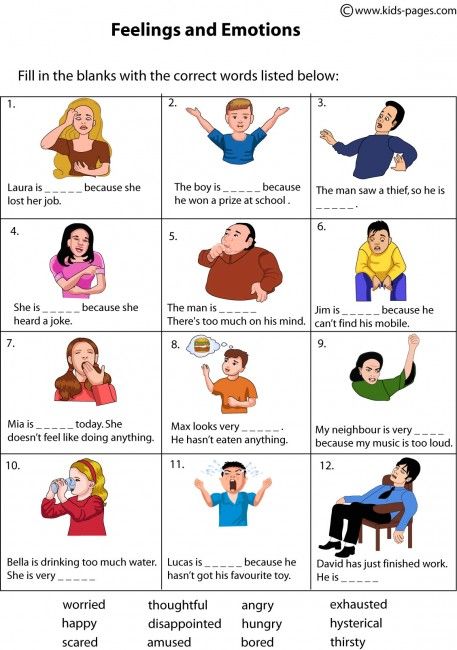
If you're happy and you know it, show a smile.
If you're happy and you know it, and you really want to show it,
If you're happy and you know it, show a smile.
Continue with additional verses for other emotions:
If you're mad and you know it, stomp your feet.
If you're surprised and you know it, say "OH MY."
If you're sad and you know it, cry BOO-HOO.
If you're silly and you know it, make a face.
If you're scared and you know it, shiver and shake.
Finish the song with: If you're happy and you know it, shout HURRAY!
|
| ||||
| Emotion Faces Cut and Color | Emotions Write and Draw |
|
|
MBOU Odintsovo Lyceum No.
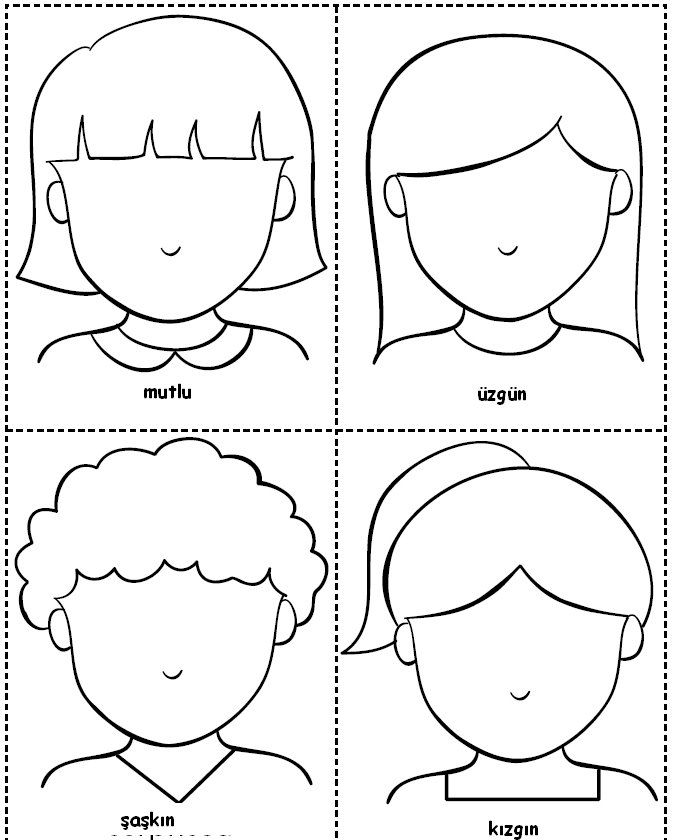 2 preschool department
2 preschool department Senior teacher Dzhula Elena Petrovna
The problem of the development of the child's emotional sphere currently attracts many scientists. This is due to the fact that the current generation of children is brought up in special conditions, in a situation of social, economic and political instability, a change in psychological and pedagogical attitudes towards the upbringing and education of preschoolers, and the modernization of the education system. Therefore, the results of many years of research by scientists (K. Izard, V. K. Vilyunas, A. D. Kosheleva, etc.), who dealt with this problem, do not allow today to fully reflect the change in the social order for the development of certain aspects of this problem. One of these aspects is methodical work in kindergarten to provide conditions for the emotional development of preschool children.
The concept of emotions and emotional development
“The emotional development of a preschooler is one of the most important conditions for its education” A.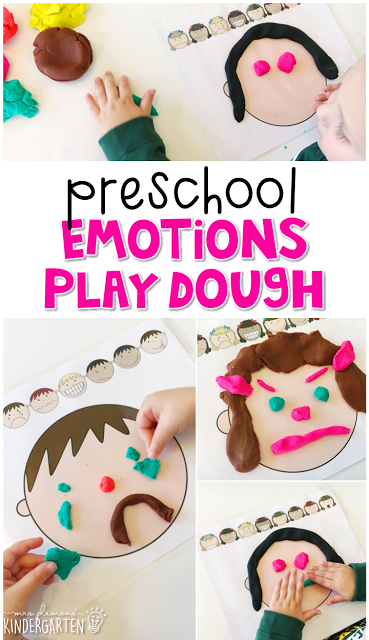 V. Zaporozhets
V. Zaporozhets
The development of a child is closely interconnected with the peculiarities of the world of his feelings and experiences. Emotions, on the one hand, are an "indicator" of the state of the child, on the other hand, they themselves significantly affect his cognitive processes and behavior, determining the direction of his attention, the features of perception of the world around him, and the logic of judgments.
Often the words "emotion" and "feeling" are used as synonyms, while an emotion is a direct, temporary experience of some more permanent feeling. In the exact translation into Russian, “emotion” is emotional excitement, spiritual movement.
Emotions - a special class of subjective psychological states, reflecting in the form of direct experiences, sensations of pleasant or unpleasant, a person's attitude to the world, to people, the process and results of his practical activity.
In humans, the main function of emotions is that, thanks to emotions, we understand each other better, we can, without using speech, judge each other’s states and better re-adjust to joint activities and communication, to anticipate situations and events that have not actually occurred yet , based on ideas about previously experienced or imagined situations.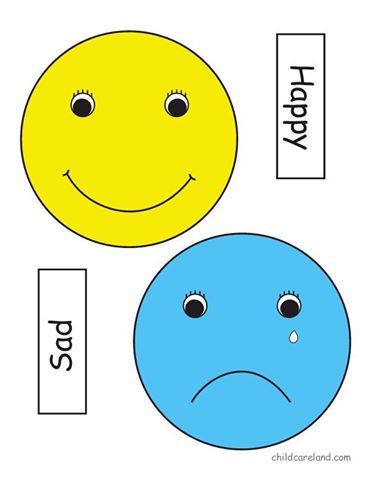 According to the classification proposed by K. Izard, fundamental and derivative emotions are distinguished.
According to the classification proposed by K. Izard, fundamental and derivative emotions are distinguished.
K fundamental include: interest, joy, surprise, suffering, anger, disgust, contempt, fear, shame. The rest of the emotions are derivatives.
It should not be assumed that if there are more negative emotional states, then this means that positive emotional states have a smaller share in the general register of human emotions. A greater variety of negative emotions makes it possible to more successfully adapt to adverse circumstances, the nature of which is successfully and subtly signaled by negative emotional states. As a child grows and develops, changes occur in his emotional sphere. His views on the world and relations with others are changing, the ability to recognize and control his emotions develops. But by itself, the emotional sphere cannot develop. It needs to be constantly developed. So, young children are often “captured by emotions”, because they still cannot control their feelings, which can lead to impulsive behavior, complications in communicating with peers and adults.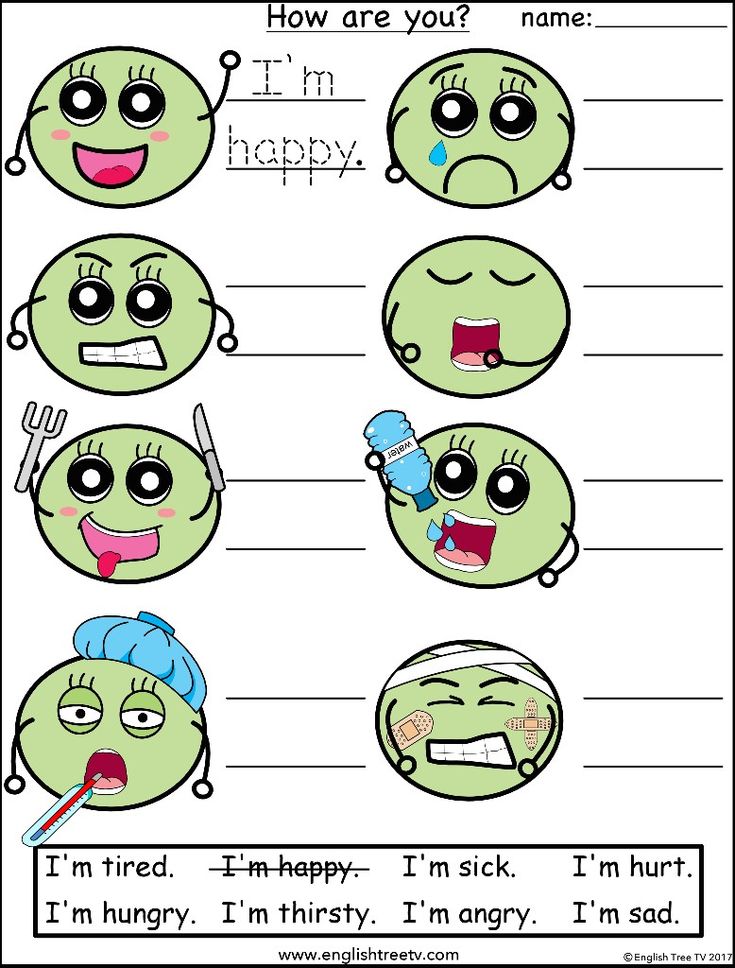 However, as they develop emotionally, they constantly develop the ability to realize and control their experiences, to understand the emotional state of other people, the arbitrariness of behavior develops, feelings become more stable and deep.
However, as they develop emotionally, they constantly develop the ability to realize and control their experiences, to understand the emotional state of other people, the arbitrariness of behavior develops, feelings become more stable and deep.
Emotional development in preschool age.
The emotional development of a preschooler is associated primarily with the emergence of new interests, motives and needs. Social emotions and moral feelings begin to develop intensively. The establishment of a hierarchy of motives leads to changes in the emotional sphere.
Identification of the main motive, to which the whole system of others is subordinate, stimulates stable and deep feelings. Feelings lose their situationality, become deeper in semantic content. An emotional anticipation is formed in a preschooler, which makes him worry about the possible results of his activity, to anticipate the reaction of other people to his actions. Gradually, the preschooler begins to foresee not only the intellectual, but also the emotional results of his activities.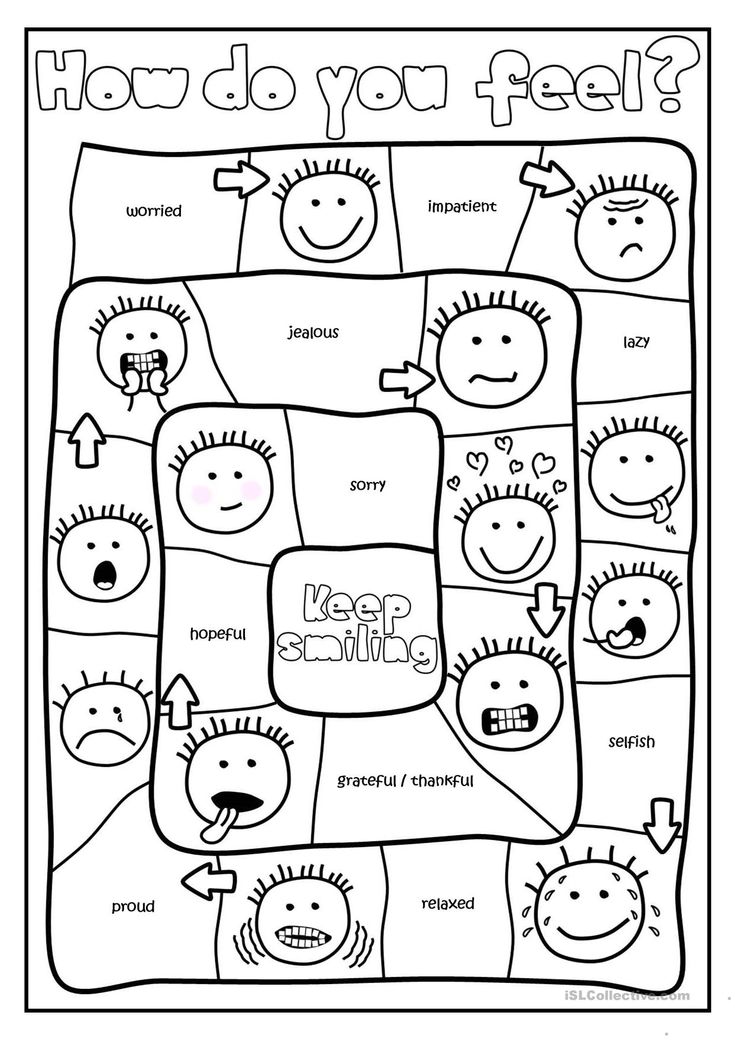 Assuming how happy mom will be, he gives her a gift, refusing an attractive game.
Assuming how happy mom will be, he gives her a gift, refusing an attractive game.
Also, changes in the emotional sphere are associated with the development of the cognitive sphere of the personality, self-awareness. The inclusion of speech in emotional processes ensures their intellectualization. The first attempts to restrain one's feelings, for example, their external manifestations - tears, can be seen in a child at 3-4 years old. The older preschooler begins to control the expression of emotions, influencing himself with the help of a word. So at preschool age, the child masters the highest forms of expression - the expression of feelings, with the help of intonation, facial expressions, pantomime.
In addition to vegetative and motor components, the structure of emotional processes now includes complex forms of perception, imaginative thinking, and imagination. The child begins to rejoice and grieve not only about what he is doing at the moment, but also in connection with what remains to be done.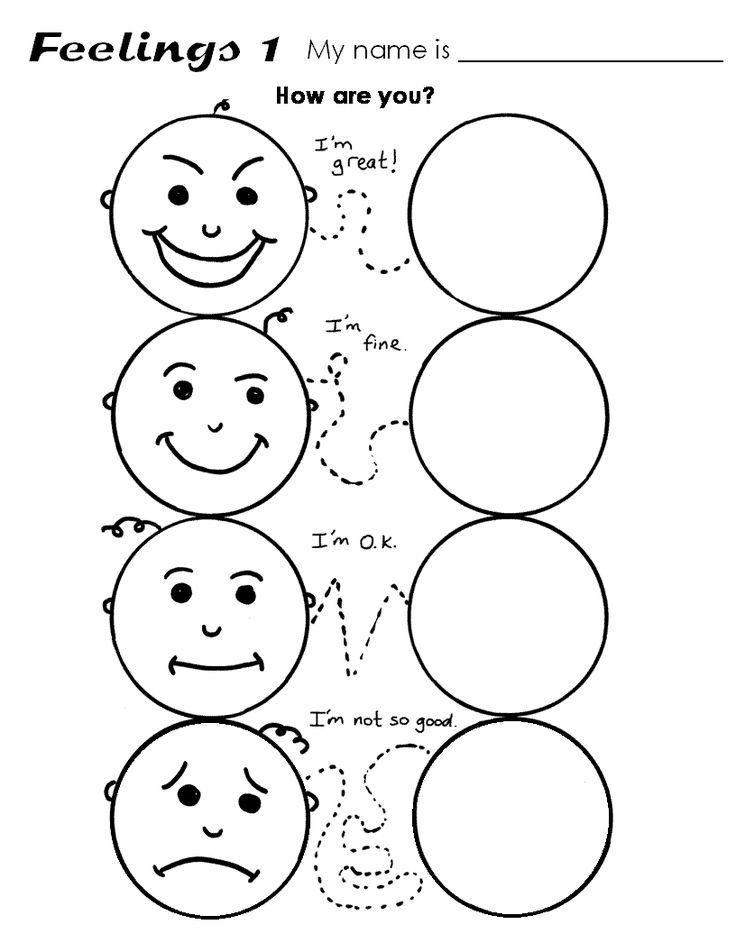 Experiences become more complex and deeper. At the same time, higher feelings are intensively developing: moral, aesthetic, cognitive.
Experiences become more complex and deeper. At the same time, higher feelings are intensively developing: moral, aesthetic, cognitive.
Relationships with loved ones are the source of humane feelings. A preschooler turns into a subject of emotional relationships, empathizing with other people. A powerful factor in the development of humane feelings is a role-playing game. In addition, new emotional experiences arise in labor activity: joy from overall success, satisfaction from the good performance of one's duties, dissatisfaction with one's bad work. On the basis of acquaintance of children with the work of adults, love and respect for it is formed. Preschoolers transfer a positive attitude towards work to their own activities.
Sympathy in preschoolers becomes more effective, manifesting itself as a desire to help, sympathize, share. Sympathy and sympathy encourage the child to commit the first moral deeds. A 4-5 year old child fulfills moral standards, showing a sense of duty, first of all, in relation to those with whom he sympathizes and sympathizes.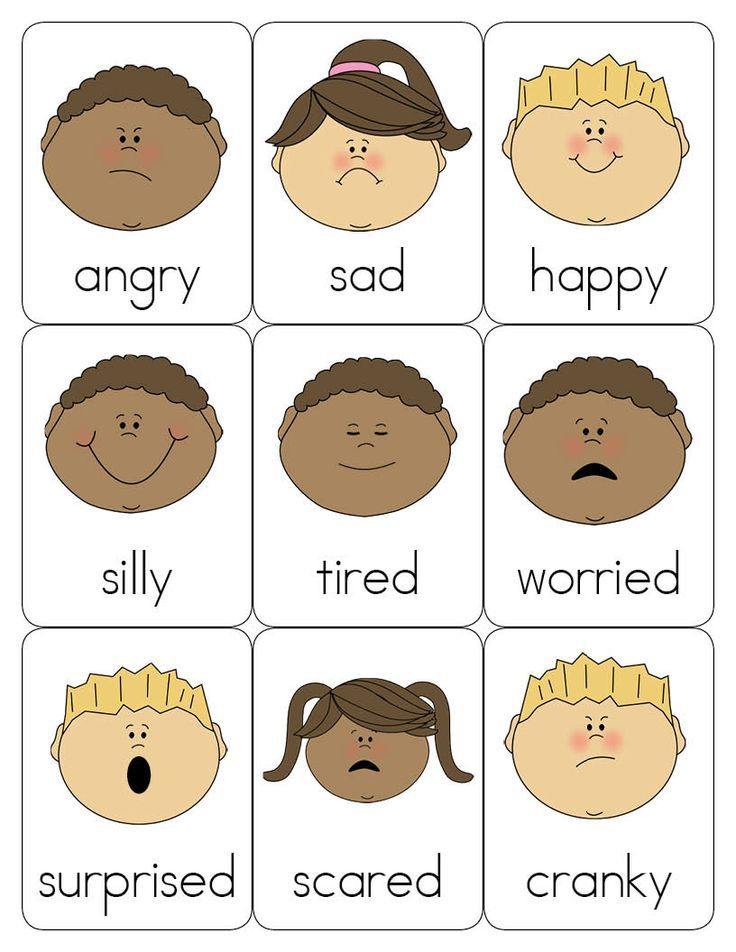 The first more or less complex manifestations of a sense of duty occur in children 4-5 years old. The child develops a moral consciousness, he is able to understand the meaning of the demands placed on him and relate them to his own actions and actions, as well as to the actions and actions of others. At the age of 5-7, a sense of duty arises in a child in relation to adults and peers, a preschooler begins to experience this feeling for babies. The most pronounced sense of duty is manifested in 6-7 years. The child realizes the necessity and obligation of the rules of social behavior and subordinates his actions to them. The ability to self-esteem increases. Violation of the rules, unworthy actions cause awkwardness, guilt, embarrassment, anxiety. By age 7, the sense of duty extends to a wider range of people with whom the child does not interact directly. Experiences are deep enough and persist for a long time.
The first more or less complex manifestations of a sense of duty occur in children 4-5 years old. The child develops a moral consciousness, he is able to understand the meaning of the demands placed on him and relate them to his own actions and actions, as well as to the actions and actions of others. At the age of 5-7, a sense of duty arises in a child in relation to adults and peers, a preschooler begins to experience this feeling for babies. The most pronounced sense of duty is manifested in 6-7 years. The child realizes the necessity and obligation of the rules of social behavior and subordinates his actions to them. The ability to self-esteem increases. Violation of the rules, unworthy actions cause awkwardness, guilt, embarrassment, anxiety. By age 7, the sense of duty extends to a wider range of people with whom the child does not interact directly. Experiences are deep enough and persist for a long time.
The development of camaraderie and friendship takes place long before children begin to understand their relationship with comrades in terms of moral standards.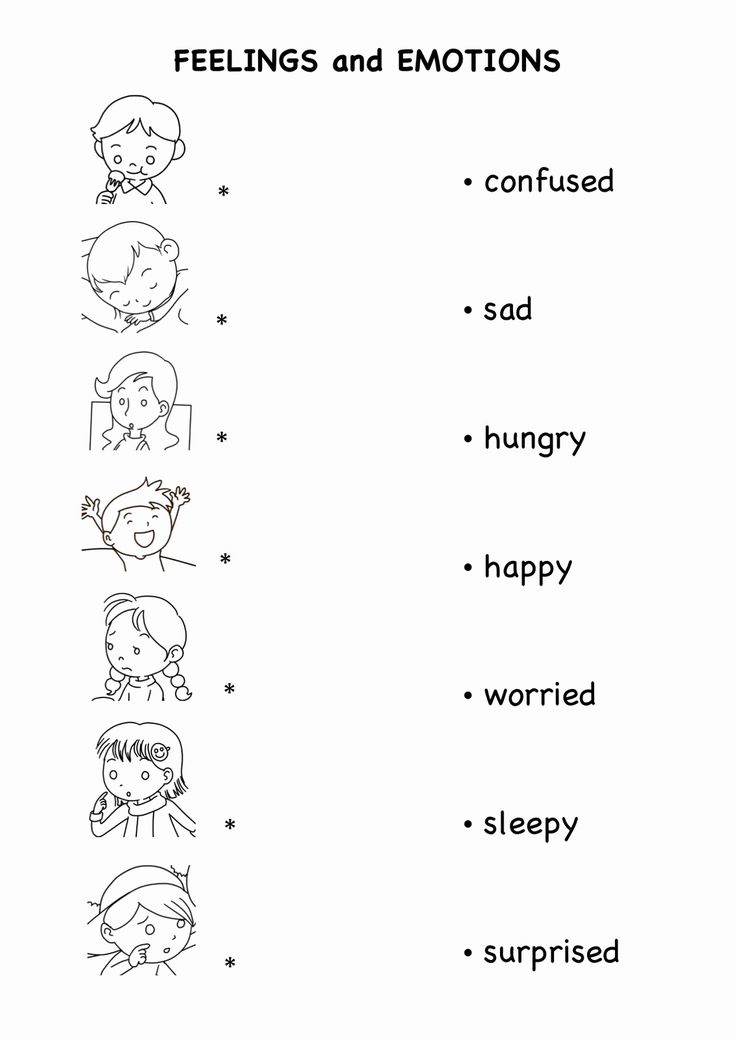 At the age of 5, the guys are dominated by friendship alternately with many children, depending on the circumstances. At the age of 5-7, the friendship of one child with many children is preserved, although paired friendship is more common and is characterized by deep sympathy. Older children play with those with whom they are friends based on sympathy and respect.
At the age of 5, the guys are dominated by friendship alternately with many children, depending on the circumstances. At the age of 5-7, the friendship of one child with many children is preserved, although paired friendship is more common and is characterized by deep sympathy. Older children play with those with whom they are friends based on sympathy and respect.
In addition to moral feelings, intellectual and aesthetic feelings develop at preschool age. The development of intellectual feelings of preschoolers is associated with the formation of cognitive activity. Joy when learning something new, surprise and doubt, bright positive emotions not only accompany the child's small discoveries, but also cause them.
The development of aesthetic feelings is associated with the formation of children's own artistic and creative activity and artistic perception. Aesthetic feelings of children are interconnected with moral ones. The child approves of the beautiful and good, condemns the ugly and evil in life, art, literature.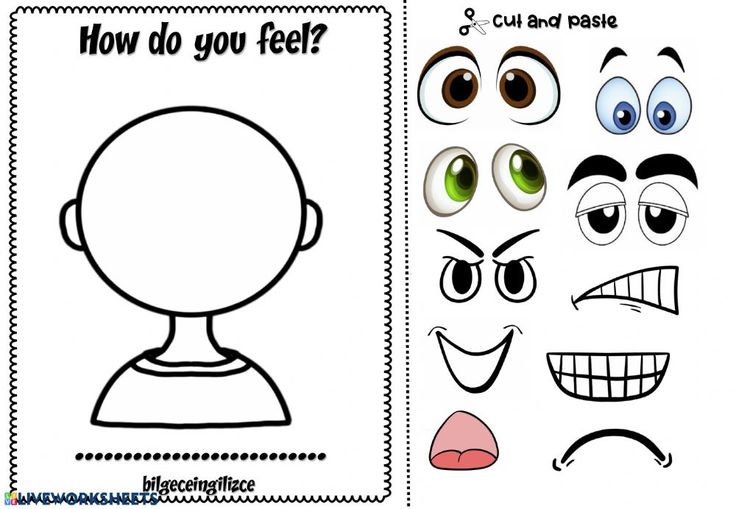
The child experiences the brightest positive emotions in a situation of comparing himself with a positive literary hero, actively empathizing with him. The preschooler makes such a comparison only mentally and with confidence that in a similar situation he would have acted the same way. Therefore, there are no negative emotions towards the character.
Let's summarize the results of emotional development at preschool age :
- the child masters social forms of expression of feelings;
- the role of emotions in the child's activity changes, emotional anticipation is formed;
- feelings become more conscious, generalized, reasonable, arbitrary, extra-situational;
- higher feelings are formed - moral, intellectual, aesthetic.
In order to properly organize the work on the development of emotions in preschool children, it is necessary:
analyze diagnostic and developmental methods, software and methodological support for the development of emotions in preschool children;
identify the level of emotional development of preschool children and assess the activities of teachers in the emotional development of children;
develop a plan of work with children and teachers and the content of activities aimed at improving the effectiveness of the emotional development of children.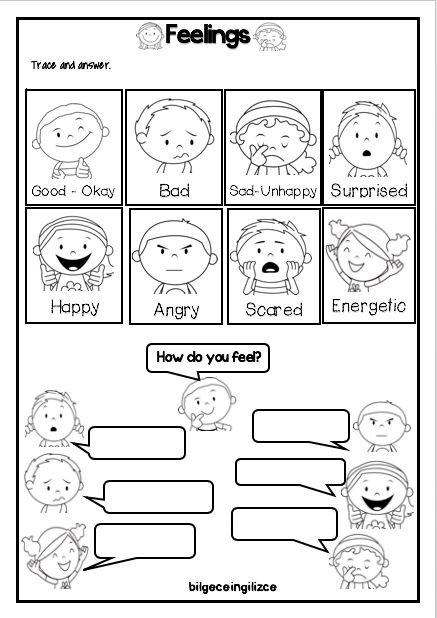
Emotional development of a preschool child
Emotional development of a preschool child
The article was prepared by: educational psychologist Koroleva M.V.
Man's relationship to the surrounding world is not only understood by him and manifested in actions, but also experienced in the form of emotions. Emotions are one of the forms of reflection by consciousness of the real world.
Accompanying almost any manifestation of the subject's activity, emotions serve as one of the main mechanisms of internal regulation of mental activity and behavior aimed at meeting actual needs.
The emotional sphere is an important component in the development of preschoolers, since no communication, interaction will be effective if its participants are not able, firstly, to "read" the emotional state of another, and secondly, to manage their emotions. Understanding your emotions and feelings is also an important point in the formation of the personality of a growing person.
The formation of a person's emotions is the most important condition for his development as a person. The extraordinary diversity of human emotions is explained by the complexity of the relationship between the objects of his needs, the specific conditions of occurrence and the activities aimed at achieving them. The class of emotions includes: moods, feelings, affects, passions, stresses. These are the so-called "pure" emotions. They are included in all mental processes and human states.
Preschool childhood is a very short period in a person's life, only the first seven years. One of the main directions of mental development in preschool age is the formation of the foundations of personality. The child begins to realize his "I", his activity, activity, begins to objectively evaluate himself. The emotional life of a preschooler becomes more complicated: the content of emotions is enriched, higher feelings are formed.
A 4-7 year old preschooler is a person with a rich and varied emotional world, he deeply feels, his experiences, first of all, are closely connected with relationships in the circle of loved ones.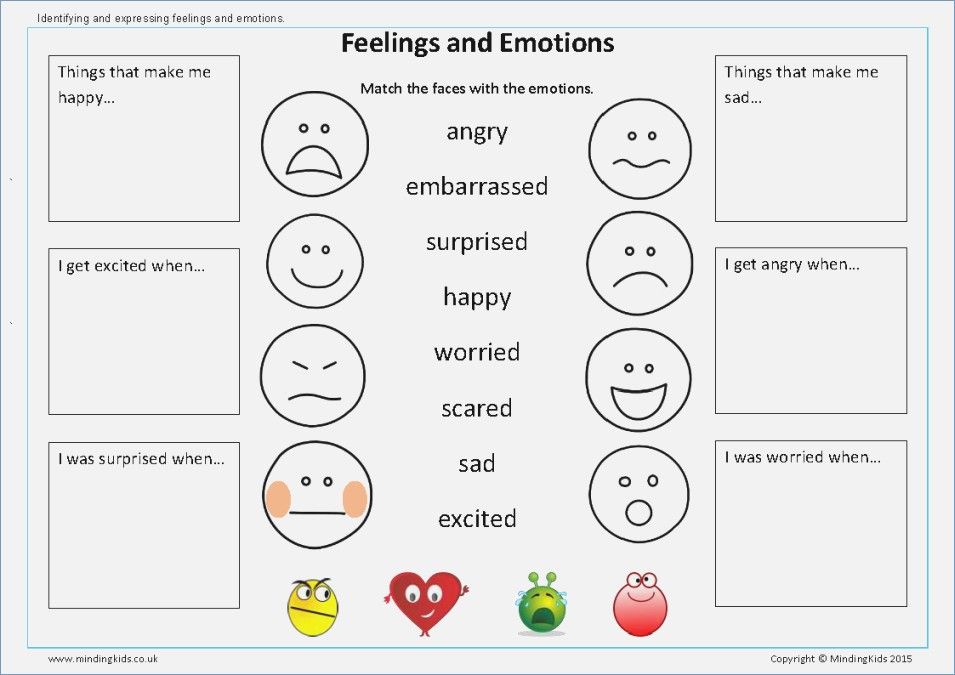
The emotional development of a preschooler is associated primarily with the emergence of new interests, motives and needs. The most important change in the motivational sphere is the emergence of social motives that are no longer determined by the achievement of narrowly personal utilitarian goals. Therefore, social emotions and moral feelings begin to develop intensively.
Emotions also play an important role in a child's life. They help to perceive reality and respond to it. An emotional anticipation is formed in a preschooler, which makes him worry about the possible results of his activity, to anticipate the reaction of other people to his actions. Therefore, the role of emotions in the activity of the child changes significantly. If earlier the child felt joy because he got the desired result, now he is happy because he can get this result. If earlier he fulfilled a moral standard in order to earn a positive assessment, now he fulfills it, foreseeing how those around him will be delighted with his act.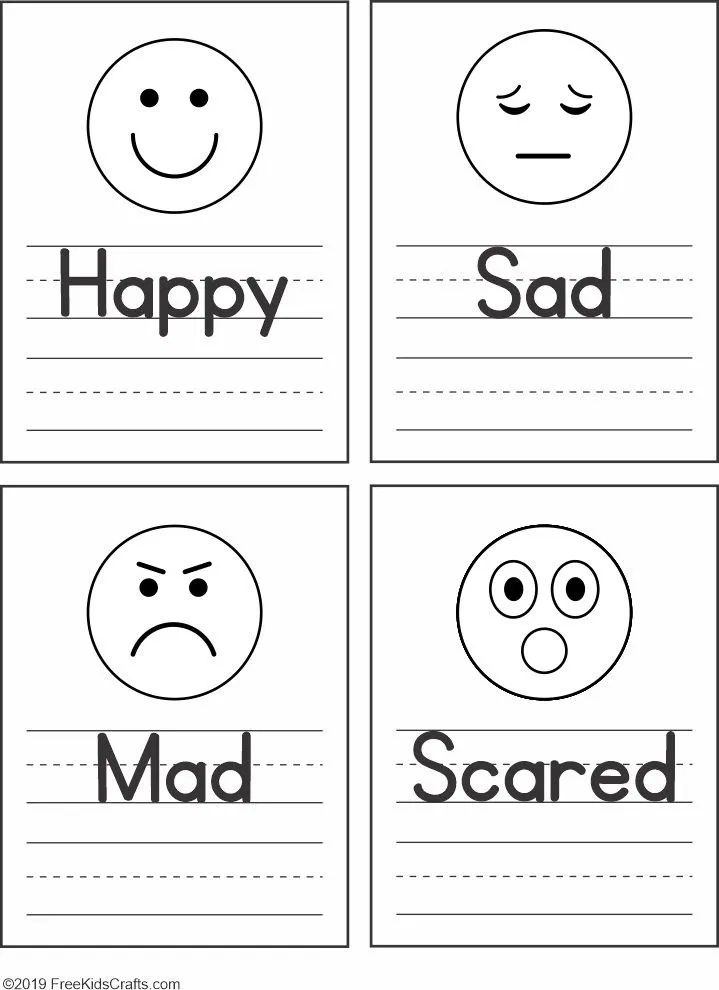
At preschool age, the emotional world of a child is richer and more diverse. From basic emotions (joy, fear) he moves to a more complex range of feelings: happy and angry, jealous and sad. The language of such feelings as the expression of shades of experiences with the help of glances, gestures, smiles, movements, voice intonations is also assimilated.
It is at preschool age that a child masters the highest forms of expression - the expression of feelings through intonation, facial expressions, pantomime, which helps him understand the experiences of another person, "discover" them for himself.
The whole life of a child of early and preschool age is subject to his feelings. He still cannot control his feelings. Therefore, children are much more prone to mood swings than adults. It is easy to amuse them, but it is even easier to upset or offend, since they almost do not know themselves at all and do not know how to control themselves. That is why they are able to experience a whole gamut of feelings and excitement in an unusually short period of time. The mood of the child largely depends on relationships with adults and peers.
The mood of the child largely depends on relationships with adults and peers.
The development of emotions and feelings in preschool children depends on a number of conditions
- Emotions and feelings are formed in the process of communication between a child and peers. Empathy with peers largely depends on the situation and position of the child. In conditions of acute personal rivalry, emotions overwhelm the preschooler, and the number of negative expressions addressed to a peer increases sharply. In group competitions, the interests of the group serve as the main core, and success or failure is shared by everyone together, the strength and amount of negative expression decreases, because against the general background of the group, personal successes and failures are less noticeable.
- Through specially organized activities (eg music lessons, reading fairy tales), children learn to experience certain feelings associated with perception (eg music).
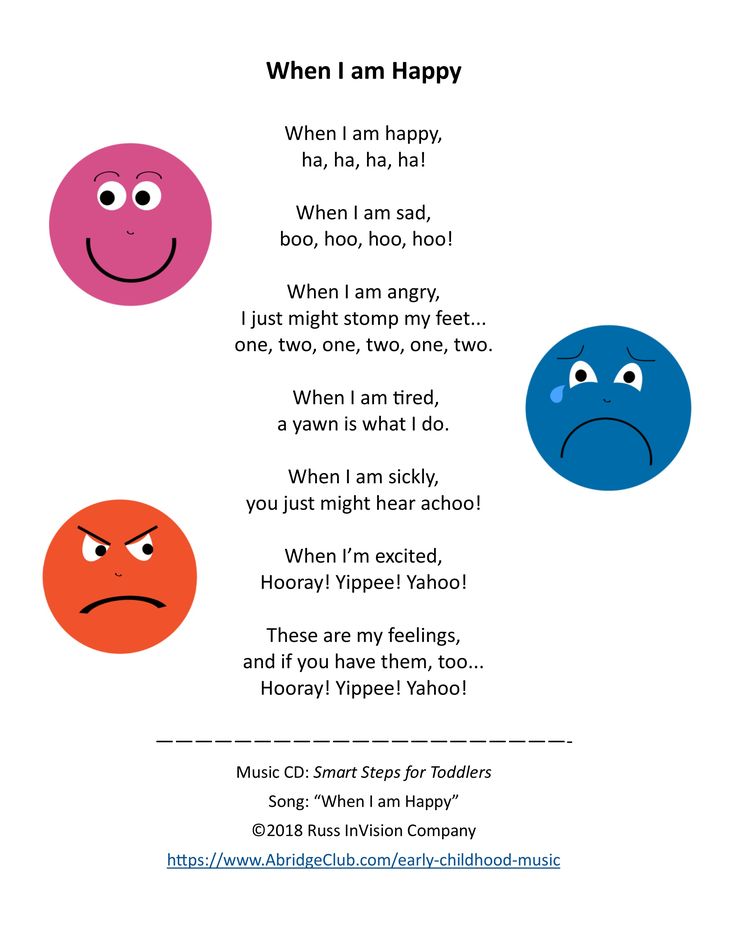 The child experiences the brightest positive emotions in a situation of comparing himself with a positive literary hero, actively empathizing with him. The preschooler makes such a comparison only mentally and with confidence that in a similar situation he would have acted the same way. Therefore, there are no negative emotions towards the character.
The child experiences the brightest positive emotions in a situation of comparing himself with a positive literary hero, actively empathizing with him. The preschooler makes such a comparison only mentally and with confidence that in a similar situation he would have acted the same way. Therefore, there are no negative emotions towards the character. - Emotions and feelings develop very intensively in the type of activity appropriate for the age of preschoolers - in a game saturated with experiences. A powerful factor in the development of humane feelings is a role-playing game. Role-playing actions and relationships help the preschooler to understand the other, take into account his position, mood, desire.
- In the process of labor activity aimed at achieving a result useful to others, new emotional experiences arise: joy from common success, sympathy for the efforts of comrades, satisfaction from the good performance of one's duties, dissatisfaction with one's poor work.
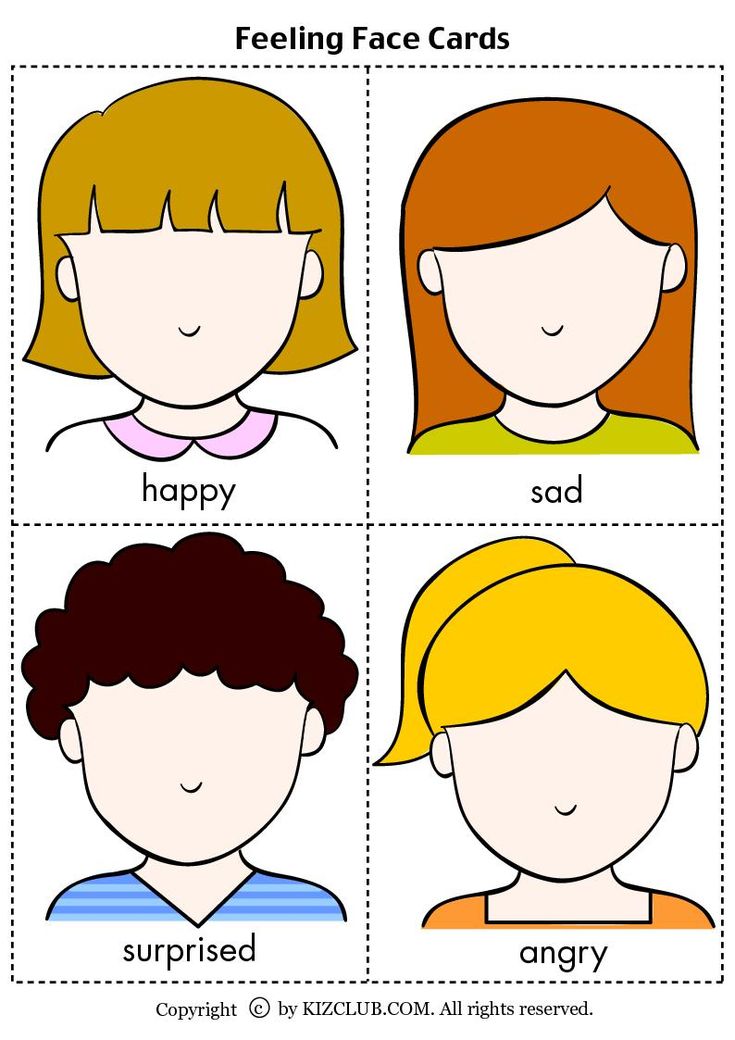
Learn more

